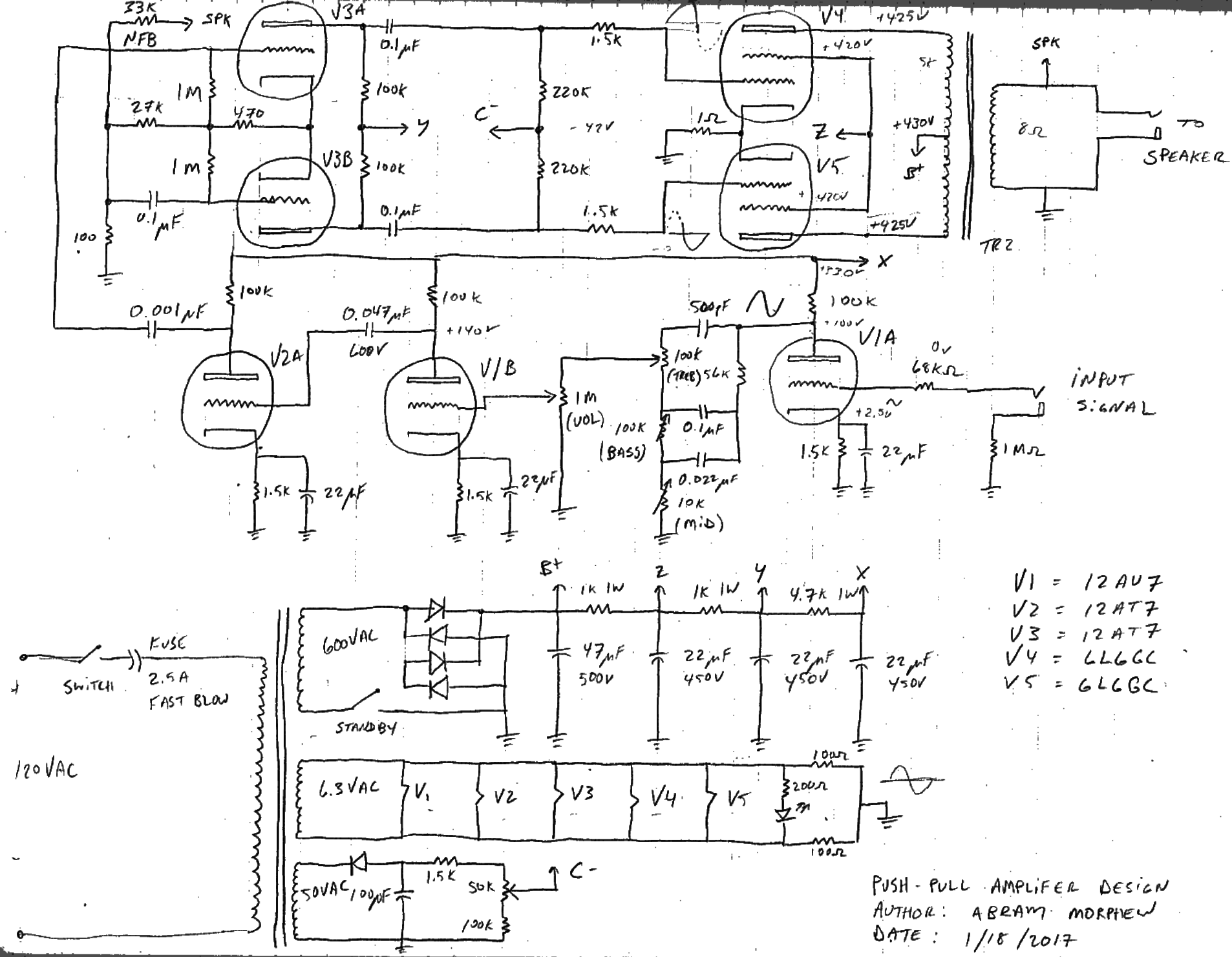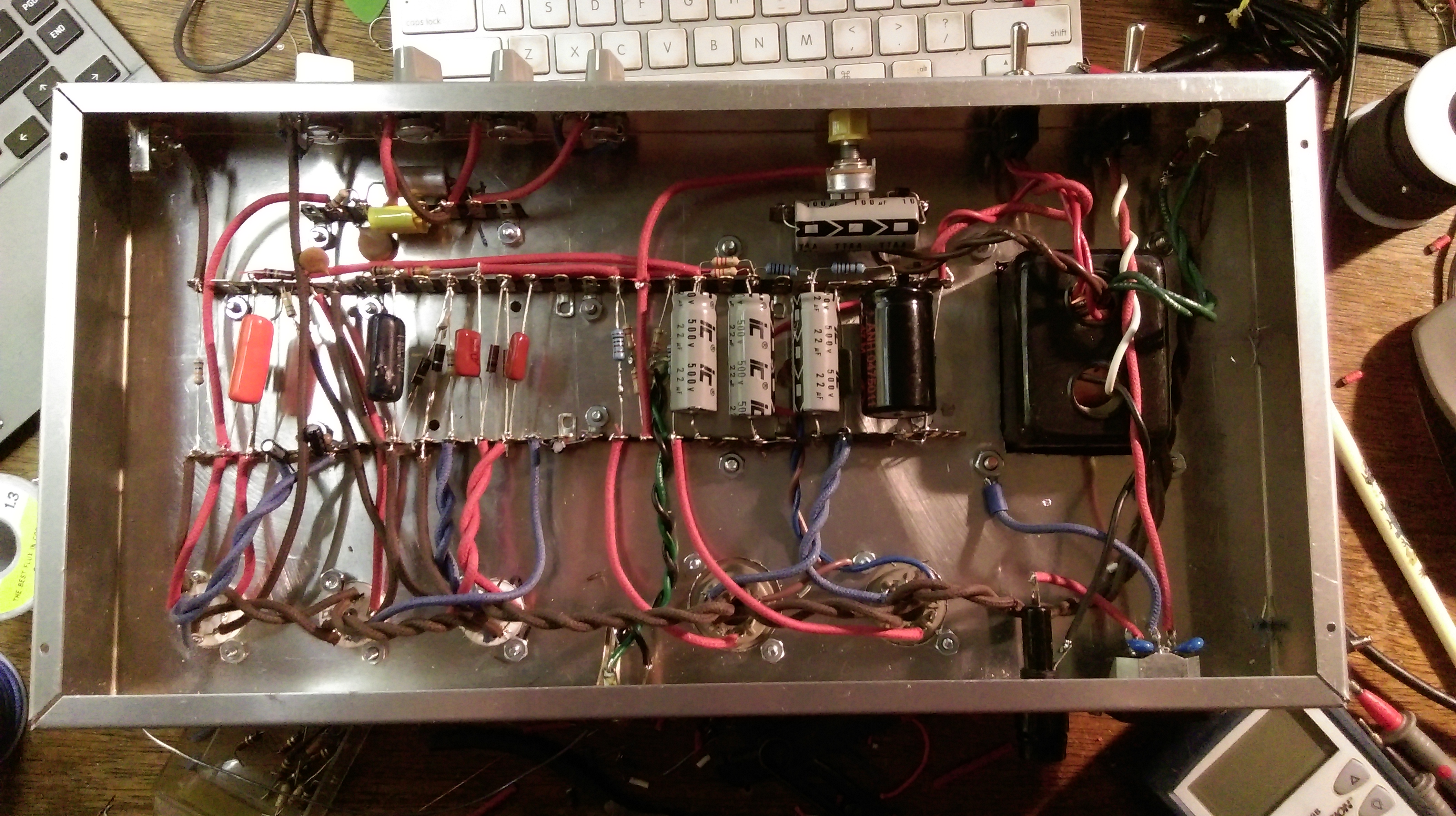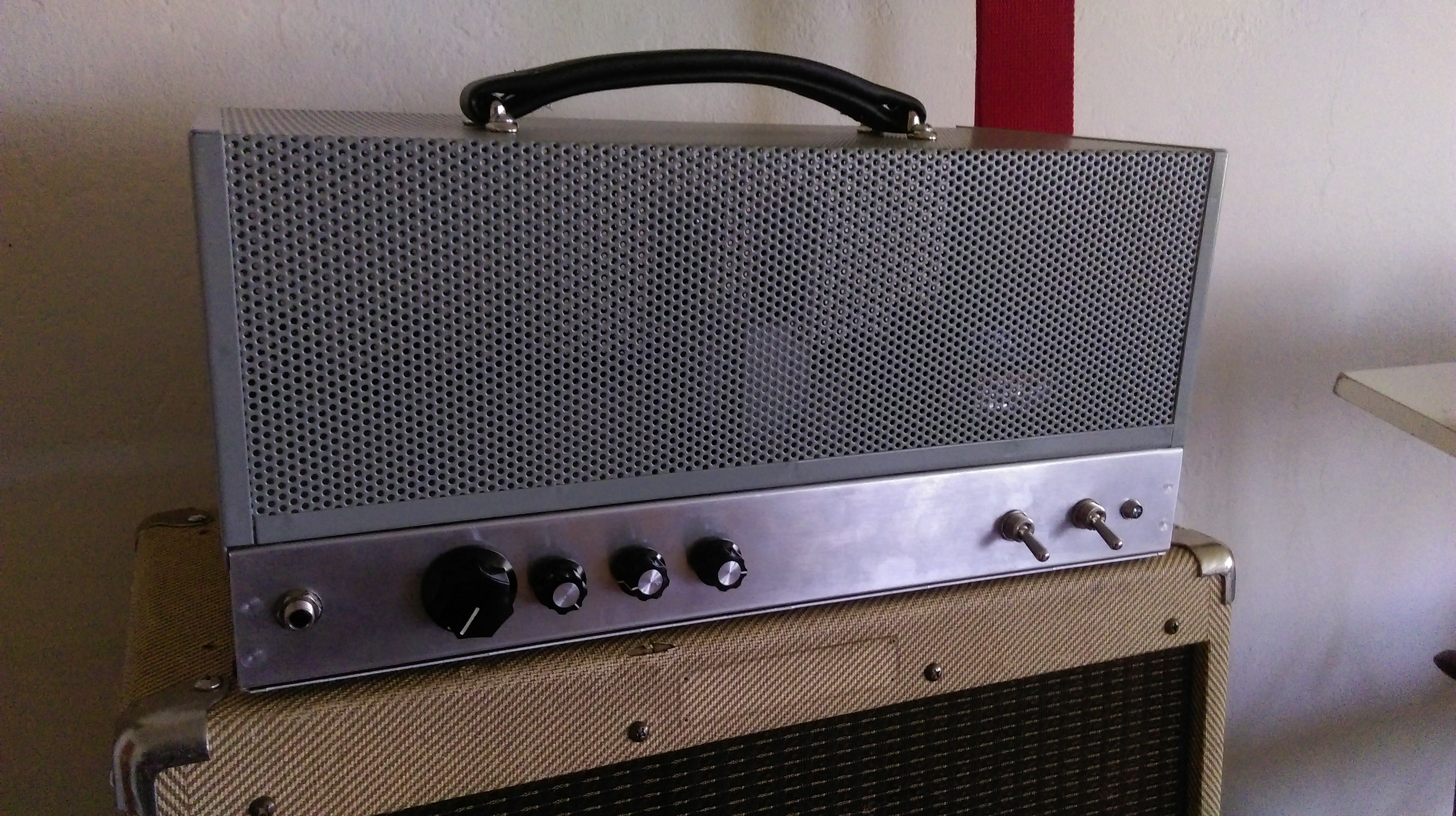Well, 2017 is more than half over now. This means I should probably post something to get at least one post in for this year. I’ve been meaning to do a write up about this project for a while, but time isn’t as freely available as I would like it to be. Go figure. I had been wanting to try a push-pull tube amp build for years and scrapped together a design from parts I had lying around. I play a Gretsch G5265 baritone guitar with bass VI strings (this was its original configuration when I got it back in ’08), and I’ve had a hard time finding an amp that really suits the sound of the mini-humbuckers and it’s very deep tone. I decided to etch together a blackface Bassman-like amp with a tone stack capable of giving it the upper-mid range that it needs to bring out the high notes of the instrument. Unfortunately, I still haven’t gone through a rigorous analysis of the design other than some tone stack simulations in LTspice, but I’ll give out the schematic and details of the build.

First off, the secondary voltage of the transformer should read around 300 V peak or around 600V peak-to-peak. Unlike a typical Bassman, it lacks a choke and the negative feedback resistor value is pretty large by comparison. I just swapped out values until I liked the sound and the oscillations stopped happening. I might swap this out with a 22k resistor again, but I can’t complain so far about the tone. There is one side of a 12AU7 (V2b) which is currently unused. I might make a simple phase shift oscillator of that later to make a tremolo circuit. If someone wanted to swap out 12AX7s in this design, the thing would be hella dirty and loud for a 40-ish watt amplifier (I still have to measure the actual wattage delivered to the load).

Here is a plot of the magnitude of the tone stack simulation with the treble at noon, the bass at 9 o’clock, and the mid all the way up. The behavior of the stack is interesting as changing any one of the pots can have a sometimes dramatic effect on the position of the mid center frequency. This is one of the made drawbacks of passive tone stacks since the change in resistance of any potentiometer changes the transfer function for the network. However, the tone stack does lend itself to also listening to recorded music when setup properly. We’ve actually used this as a PA head in conjunction with a subwoofer which worked out really well. It’s bright nature actually seems to work well for vocals and low-mid while the sub picks up anything under 150 Hz or so.

I have a number of pictures that show how the layout progressed from right to left inside the chassis. Basically, I just started on the right side closest to the power transformer and worked towards the input. The biasing circuitry is towards the front of the amp by the large filter caps in the picture.

I was reading through Theory and Application of Electron Tubes [1] and discovered that the blue plasma color is actually caused by a spray of electrons from the cathode that actually overshoot the anode and slam into the glass. In the picture, you can see how the blue light only cover the area surrounding the big gray metal anode inside the glass. My new JJs that I put in there don’t have such an extreme blue color to them during operation.

Lastly, pictured above is the final build with the steel cage situated on top. The chassis is aluminum while the cage is steel. Both are manufactured by the fine folks at Hammond. I picked these up off CE Distribution’s website for a decent price. There’s definitely some room for improvement in the overall, but I really didn’t think it would work at all. I do think that it’s one of the nicest sounding amps I’ve ever owned regardless of the fact that I built it. I’ll post some sound samples eventually with some different instruments so anyone who stumbles upon this post can hear what the amp sounds like at lower volumes at least.
References
[1] Reich, H. (1944). Theory and Application of Electron Tubes. New York [usw.]: Mc Graw-Hill.
Leave a Reply
You must be logged in to post a comment.